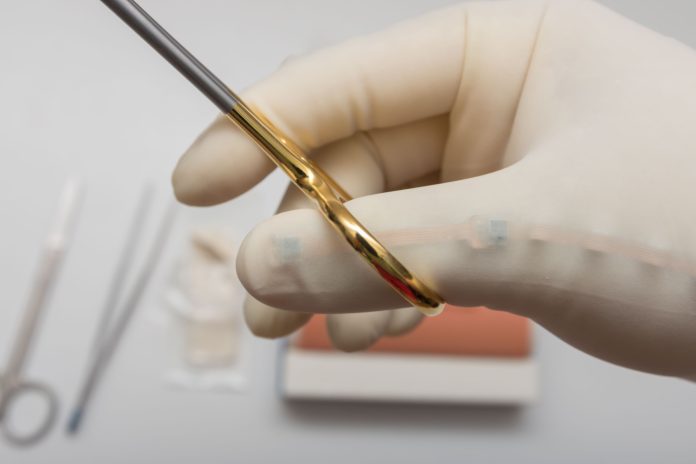Venture Capital Examines Fusion Research
On May 2nd the Milken Institute – a well-connected think tank – hosted its 19th annual conference [3]. This event is attended by the global elite; from finance to government to technology. This year – for the first time – there was a panel held on fusion power. The panel: “Nuclear Fusion: Has Its Time Finally Arrived?” was hosted by Katie Fehrenbacher a senior writer at Fortune magazine. It was an odd group. Speakers included: Michl Binderbauer the CTO of Tri Alpha Energy, Michel Laberge the founder of General Fusion, Dennis Whyte, the director of fusion research at MIT and Thomas McGuire who heads up Lockheed Martin’s fusion effort. They talked for an hour.
Katie did an excellent job. She asked the perennial questions: will fusion come as a small or large machine? Will it be a government program or a startup? Should we apply the “silicon valley model” to fusion? The answers were as varied as the guests. Of the four panelists, Dr. Michel Laberge gave the most impassionate call for fusion power. He made a bold plea for the technology [3]:“Do you ever hear about fusion? Never. Very, very little. Fusion is not considered much as a solution to global warming. [But] as a physicist, it is the best solution … and society is not paying the slightest bit of attention.” He is right. Society is not paying any attention. This is a world-shattering technology that people have barely noticed. Fusion could be a green, cheap source for abundant energy. It could change the world. Dennis Whyte had a good answer for why people have not noticed. “We need to make something work. The moment something works, the game changes.” Excellent answer. Net power is like the 4 minute mile. People once considered it impossible; but once it was broken, people said it was inevitable.
Dennis Whyte And MIT:
Dennis Whyte was an odd addition to this panel. He knew this. He even said: “I represent the things you guys are railing against.” Dr. Whyte runs the Plasma Science and Fusion Center at MIT. This organization is still heavily rooted in the past. Their focus on ICF and Tokamaks – with a smattering of materials, plasmas and diagnostics – will not suffice if these approaches fail. Hence, the massive failure of NIF to get ignition has damaged MIT. The out of control costs and timelines for ITER will do still more damage. The center needs to hit the reset button. They need to explore new approaches. Approaches that many have murkier physics; but may be cheaper, smaller and closer to net power. In short: they need to broaden their scope outside ITER and NIF. We need MIT. The fusion community would benefit from MIT’s talent and resources across so many unexplored areas. But they seem stubbornly stuck on tokamaks and ICF. Below is a chart of some of the many fusion concepts that MIT could choose to work on [A-EE].
Whyte lacks this vision. His new ideas – are just more tokamaks. Recently, Whyte has been pushing a design known as the ARC reactor [1]. This machine adds fancy new technologies to a tokamak concept. It is another big, expensive, long term tokamak. We understand tokamaks. There have been over 215 of these built, planned or decommissioned around the world [23]. None of these have gotten net power. The ARC reactor happens to include high temperature superconductors (the innovation that Whyte keeps harping on). MIT should be re-examining all fusion approaches; not adding bells and whistles to worn-out ideas.
Thomas McGuire And Lockheed:
Dr. Thomas McGuire would know something about unexplored physics. Of the four panelists, McGuire’s work is the most cutting edge – but also has the most inherent risk. Unfortunately for him, this edge did not come across in his answers. McGuire sounded excessively dreamy. He also got too technical and fumbled his responses. To be taken seriously, he must get better; he must clean up his off-the-cuff answers. Regardless of how he sounded, his presence represented the boldest research on this panel. McGuire has been innovating in fusion for over a decade, going back to his time in graduate school. There are signs that this effort is bearing fruit. On May 3rd Rob Weiss, director of the Lockheed Martin Skunkworks, told the Atlantic Council that they were about 4 months into a significant investment into the project [2]. Critically: Mr. Weiss revealed that they were raising the plasma temperature and pressure, to see how the trap behaves.
Lockheed is chasing, what could be the worlds’ best plasma trap. Making one of these work gets you well down the road to a reactor. McGuire is trying for a concept known as: cusp confinement. A cusp is a place where two magnetic fields bend sharply and repel one other [6]. One example is two north poles repelling. Cusps are awesome because the plasma (mostly) leaks through the edges and apexes of cusps [7]. This shrinks the total area over which the plasma can be lost. The containment is a volume to hold in plasma with a few small holes and leaks. Cusps have other advantages. First, their fields are bent inward. This is great. Plasma tends to drift into bigger curved paths – so inward bending fields help to push material into the center [8]. Secondly, cusps have a null point in the center. This null point is a spot of no magnetic field. This is a place where plasma can collect. Over the years, a whole family of cusp concepts have been proposed [9].
Cusp systems can shrink losses, but cusp confinement may go even further. In some cases, the plasma can actually plug up the cusps [5]. Plasma is a moving soup of charged material. Its motion can make its own magnetic field. This can clash and reject the outside field. This may lead to a plugged cusp [5, 10, 11]. This system – theoretically – has a sharp boundary with a sheet of electrons moving on its surface [5, 10, 11]. This would be the world’s best plasma trap. Moreover – not only is material better contained – but this plasma does not mix with the outside fields. This lowers cyclotron radiation; meaning the plasma will lose less energy as light [6]. In August, McGuire revealed that they are getting leakage through these cusps and attempting to re-circulate the lost plasma back into the machine [7].
Dr. Binderbauer And Tri Alpha Energy
The contrast between McGuire and Michl Binderbauer on stage, was stark. McGuire sounded like a project lead – but – Binderbauer sounded like a seasoned CEO. Of everyone speaking, Binderbauer sounded the most practical. His view of fusion, was from the point of view of an electric utility [3]. “Our goal was to look at this from a very practically defined end point …. What would utilities ultimately want? Economics … maintainability … and technological accessibility has to be part of this.”
Practical thinking – permeates all of Tri Alphas’ culture. Other people have pointed this out. Ray Rothrock described this company as one tightly bound to its final objective. Mr. Rothrock was both an early and major investor in Tri Alpha. He laid out the challenges of keeping the organization on target in an article he wrote earlier this year [4]. “Imagine this: you have created a privately financed energy project and recruited a world-class scientific and engineering team … Can you imagine the temptation to try just one more idea?” This has got to be tough. Tri Alpha is proving you can build a great company around fusion research. But, their organization is worthless – if their product fails.
Tri Alpha Energy is a startup built around the field reversed configuration. This is not a new concept. It grew out of pinch research. In 1958, the pinch became mankinds’ first controlled fusion device. In the late 1950’s most fusion research focused on pinches. Pinches happen when current races down a tube of plasma. This makes a crushing inward magnetic field, squeezing material in the center. As researchers explored how pinches work, they made an odd observation. For a brief moment, the plasma was stable [12]. Weird. These plasma flukes became the field reversed configuration. Over the last five decades, at least 42 FRC experiments have been tried [13, 14]. At present, there are at least three companies pursuing this technology: Tri Alpha Energy, Helion and MSNW. Both Helion and MSWN are the result of efforts by Dr. John Slough in Seattle. Dr. Slough could have easily been on this panel.
The FRC is a very cool concept. It is an example of plasma creating a structure which self-contains itself. Plasmas’ ability to self-organize comes from the fact that it conducts electricity. That means it can generate its own magnetic field. You can make structures out of plasma with this property [13]. The FRC is one type. This is shown below.
This is two structures; one inside the other. Outside, there is a normal field and a normal plasma. But on the inside, everything flips. Plasma is spinning in the opposite direction. The inside fields run against the outside one. This structure is reversed. This concept presents several advantages. First, the plasma can be self-stable; holding itself together. Second, the inside plasma is denser than the outside [15]. Higher density, will definitely help.
But, there are two big problems with Field Reversed Configurations. The first is that they are hard to make. Many people have proposed various techniques for doing this over the years [16 – 19]. Roughly speaking, you need three sets of fields to do this. You need one for starting the structure; one for moving it; and one to stabilize the structure. This is demonstrated by one way to make an FRC: the merging of two spinning plasmas. This shown below and depicted on Youtube [20].
Using metal rings, you setup fields which oppose one another. Then you release plasma. The field pivots. It switches from being made by the metal rings, to being made by the plasma donut. These can be directed by varying magnetic fields [20]. The spinning donuts are brought together and stabilized using another set of fields. Clearly – this is not easy.
The other major problem with Field Reversed Configurations is their stability. Solving this problem was the impetus for Tri Alpha Energy. Dr. Norman Rostoker, had had a long career studying the FRC. The structure had deadly instabilities which killed it. These can come from both the center and the edge of the plasma [14]. In 1998, Norman founded the company with a scheme to beat the edge instabilities [4]. By constantly feeding particle beams along the edge of the FRC, Rostoker thought he could keep it alive, indefinitely [21, 4]. This is like the game, where a kids hits a loop with a stick. By constantly whacking a hoop the kid can keep it rolling. The loop is the FRC; a plasma donut. The stick is the particle beam. By constantly knocking, the structure is kept stable and spinning. Tri Alpha has invested years and millions into this approach. After two decades, the company is claiming major results. In a huge paper last year in Physics of Plasma, the company offered data that the plasma was stable for the duration of the run [22]. Presumably then, if they build a machine to run continuously – then they will get continuous, stable fusion.
Conclusion:
The Milken panel was a milestone. But – this panel was also the tip of an iceberg. Many other speakers could have been invited. From Dr. Park on Polywells to Dr. Slough on FRCs to Dr. Hsu for MTF. These folks – and others – are innovating. Their goal will be cheap, small, standardized and serviceable fusion power.
Where is the US government in all of this? They are failing to support these innovators. It is tragic. We are giving our technological edge over to foreign countries. If another nation gets fusion power first, it would be devastating to the US; economically, culturally, politically and militarily. Today, NASA – the funding starved space agency – gets 32 times the support that fusion does. The US government is barely trying. What funding we do get, is gobbled up by tokamaks and ICF. There is no home for these “rogue” concepts. Researchers are left ti fend for themselves. This must change. This has to change.
Works Cited:
1. Sorbom, B. N. “ARC: A Compact, High-field, Fusion Nuclear Science Facility and Demonstration Power Plant with Demountable Magnets.” ARC: A Compact, High-field, Fusion Nuclear Science Facility and Demonstration Power Plant with Demountable Magnets. Fusion Engineering and Design, Nov. 2015. Web. 22 May 2016. .
2. Mehta, Aaron. “Lockheed Still Supporting Portable Nuclear Generator.” Defense News. Defense News, 3 May 2016. Web. 22 May 2016. .
3. Fehrenbacher, Katie, Michl Binderbauer, Michel Laberge, Thomas McGuire, and Dennis Whyte. “Nuclear Fusion: Has Its Time Finally Arrived?” Milken Global Conference 2016. Los Angeles. 2 May 2016. Panel. https://www.youtube.com/watch?v=nWjAJKPLMEo
4. Rothrock, Ray. “What’s the Big Idea?” Issues in Science and Technology XXXII Issue 2, Winter 2016. .
5. Grad, Harold. “Plasma Trapping in Cusped Geometries.” Physical Review Letters 4.5 (1960): 222-23.
6. J. L. Tuck, A new plasma confinement geometry, Nature (London) 187, 863 (1960).
7. McGuire, Thomas. “The Lockheed Martin Compact Fusion Reactor.” Thursday Colloquium. Princeton University, Princeton. 6 Aug. 2015. Lecture.
8. McMillan, Brian. “Lecture 8, Slide 20.” PX438 Physics of Fusion Power. The University of Warwick, 13 Feb. 2013. Web. 04 Apr. 2013.
9. Berkowitz, J., K.o. Friedrichs, H. Goertzel, H. Grad, J. Killeen, and E. Rubin. “Cusped Geometries.” Journal of Nuclear Energy (1954) 7.3-4 (1958): 292-93. Web. 16 June 2014.
10. Park, Jaeyoung, Nicholas A. Krall, and Paul E. Sieck. “High Energy Electron Confinement in a Magnetic Cusp Configuration.” In Submission (2014): 1-12. Http://arxiv.org. Web. 13 June 2014.
11. Dolan, Thomas J. “Review Article: Magnetic Electrostatic Plasma Confinement.” Vol. 1539-1593. N.p.: Plasma Physics and Controlled Fusion, 1994. Print.
12. Green, T. S. “Evidence for the Containment of a Hot, Dense Plasma in a Theta Pinch.” Phys. Rev. Lett. Physical Review Letters 5.7 (1960): 297-300. Web. 23 May 2016.
13. Steinhauer, Loren C. “Review of Field-reversed Configurations.” Physics of Plasmas 18.7 (2011): 070501. Web.
14. Tuszewski, M. “Field Reversed Configurations.” Nuclear Fusion 28.11 (1988): 2033-092.
15. Slough, John, and David Kirtley. “Nuclear Propulsion through Direct Conversion of Fusion Energy: The Fusion Driven Rocket.” NIAC Spring Symposium (2012): Pasadena, CA. Web. 27 Mar. 2012.
16. Pietrzyk, Z.a., G.c. Vlases, R.d. Brooks, K.d. Hahn, and R. Raman. “Initial Results from the Coaxial Slow Source FRC Device.” Nuclear Fusion 27.9 (1987): 1478-488. Web.
17. Goldenbaum, G., J. Irby, Y. Chong, and G. Hart. “Formation of a Spheromak Plasma Configuration.” Physical Review Letters 44.6 (1980): 393-96. Web.
18. Nogi, Yasuyuki, Hiroaki Ogura, Yukio Osanai, Katsunori Saito, Shouichi Shiina, and Hisamitsu Yoshimura. “Spheromak Formation by Theta Pinch.” Journal of the Physics Society Japan 49.2 (1980): 710-16. Web.
19. Jones, W. B. “Generation and Motion of Plasmoids in a Magnetic Field with Mirrors.” Physics of Fluids 11.7 (1968): 1550. Web
20. Slough, John. “MOQUI Simulation of Two FRCs Colliding.” YouTube. MSNW LLC, 27 Mar. 2013. Web. 11 Jan. 2015.
21. Rostoker, N. “Colliding Beam Fusion Reactor.” Science 278.5342 (1997): 1419-422. Web. 23 May 2016. .
22. Binderbauer, M. W. “A High Performance Field-reversed Configuration.” A High Performance Field-reversed Configuration. AIP Physics of Plasma, 15 May 2015. Web. 23 May 2016. .
23. Nick. “Conventional Tokamaks Comparison Table.” All the Worlds Tokamaks.
Chart Citations:
A. “The dynomak: An advanced spheromak reactor concept with imposed-dynamo current drive and next-generation nuclear power technologies” Fusion Engineering and Design, Sutherland, Jarboe, Morgan, Pfaff, Lavine, Kamikawa, Hughes, Andrist, Marklin
B. Jarboe, T.r., B.s. Victor, B.a. Nelson, C.j. Hansen, C. Akcay, D.a. Ennis, N.k. Hicks, A.c. Hossack, G.j. Marklin, and R.j. Smith. “Imposed-dynamo Current Drive.” Nucl. Fusion Nuclear Fusion 52.8 (2012): 083017.
C. McGuire, Thomas. “The Lockheed Martin Compact Fusion Reactor.” Thursday Colloquium. Princeton University, Princeton. 6 Aug. 2015. Lecture.
D. Park, J. “High-Energy Electron Confinement in a Magnetic Cusp Configuration.” Physical Review X. N.p., 11 June 2015. 06 Nov. 2015.
E. Wobig, H., T. Andreeva, and C.D. Beidler. “Recent Development in Helias Reactor Studies.” 19th IAEA- Fusion Energy Conference. IAEA FT/1-6, n.d. 04 Apr. 2016.
F. Wesson, John; et al. (2004). Tokamaks. Oxford University Press. ISBN 0-19-850922-7.
G. Spitzer, Lyman. “The Stellarator Concept.” Physics of Fluids (1958): n. pag. 4 Apr. 2016.
H. Perea, A., R. Martin, J.l. Alvarez Rivas, J. Botija, J.r. Cepero, J.a. Fabregas, J. Guasp, A. Lopez Fraguas, A. Perez-Navarro, E. Rodriguez Solano, B.a. Carreras, K.k. Chipley, T.c. Hender, T.c. Jernigan, J.f. Lyon, and B.e. Nelson. “Description Of The Heliac Tj-Ii And Its ecrh System.” Fusion Technology 1986 (1986): 673-78.
I. Miller, R.l., and R.a. Krakowski. “Modular Stellarator Fusion Reactor Concept.” Los Alamos LA-8978MS (1981): 1-161. 4 Apr. 2016.
J. Proc. of 20th International Stellarator-Heliotron Workshop (ISHW), Max Planck Institute, Greifswald, Germany. Greifswald, 2015.
K. Grieger, G., J. Nührenberg, H. Renner, J. Sapper, and H. Wobig. “HELIAS Stellarator Reactor Studies and Related European Technology Studies.” Fusion Engineering and Design 25.1-3 (1994): 73-84. 4 Apr. 2016.
L. Haines, M. G. “A Review of the Dense Z -pinch.” Plasma Phys. Control. Fusion Plasma Physics and Controlled Fusion 53.9 (2011): 093001.
M. Jarboe, T. R. “Review of Spheromak Research.” Plasma Phys. Control. Fusion Plasma Physics and Controlled Fusion 36.6 (1994): 945-90.
N. Slutz, Stephen A., and Roger A. Vesey. “High-Gain Magnetized Inertial Fusion.” Phys. Rev. Lett. Physical Review Letters 108.2 (2012): n. page 4 Apr. 2016.
O. “Mirror Systems: Fuel Cycles, loss reduction and energy recovery” by Richard F. Post, BNES Nuclear fusion reactor conferences at Culham laboratory, September 1969.
P. “Overview of LDX Results” Jay Kesner, A. Boxer, J. Ellsworth, I. Karim, Presented at the APS Meeting, Philadelphia, November 2, 2006, Paper VP1.00020
Q. Krishnan, Mahadevan. “The Dense Plasma Focus: A Versatile Dense Pinch for Diverse Applications.” IEEE Trans. Plasma Sci. IEEE Transactions on Plasma Science 40.12 (2012): 3189-221. Web.
R. Hedditch, John. “ArXiv.org Physics ArXiv:1510.01788.” Fusion in a Magnetically-shielded-grid Inertial Electrostatic Confinement Device. ArXiv, 7 Oct. 2015. Web. 22 Dec. 2015.
S. Robert L. Hirsch, “Inertial-Electrostatic Confinement of Ionized Fusion Gases”, Journal of Applied Physics, v. 38, no. 7, October 1967
T. Park, J., and R. A. Nebel. “Periodically Oscillating Plasma Sphere.” Physics of Plasmas 12.5 (2005): n. pag. AIP. Web. 22 May 2016. .
U. Tuszewski, M. “Field Reversed Configurations.” Nuclear Fusion Nuclear Fusion 28.11 (1988): 2033-092. Web. 22 May 2016.
V. Hsu, S. C., A. L. Moser, E. C. Merritt, C. S. Adams, J. P. Dunn, S. Brockington, A. Case, M. Gilmore, A. G. Lynn, S. J. Messer, and F. D. Witherspoon. “Laboratory Plasma Physics Experiments Using Merging Supersonic Plasma Jets.” J. Plasma Phys. Journal of Plasma Physics 81.02 (2014): n. pag. Web. 22 May 2016. .
W. A, Levine M., Brown I. G, and Kunkel. “Scaling for Tormac Fusion Reactors.” Scaling for Tormac Fusion Reactors. IAEA NIS, n.d. Web. April 1976. .
X. Berkowitz, J., K.o. Friedrichs, H. Goertzel, H. Grad, J. Killeen, and E. Rubin. “Cusped Geometries.” Journal of Nuclear Energy (1954) 7.3-4 (1958): 292-93. Web. 16 June 2014.
Y. Barnes, D. C., M. M. Schauer, K. R. Umstadter, L. Chacon, and G. Miley. “Electron Equilibrium and Confinement in a Modified Penning Trap and Its Application to Penning Fusion.” Physics of Plasmas Phys. Plasmas 7.5 (2000): 1693. Web. 22 May 2016. .
Z. Kodama, R., P. A. Norreys, K. Mima, A. E. Dangor, R. G. Evans, H. Fujita, Y. Kitagawa, K. Krushelnick, T. Miyakoshi, N. Miyanaga, T. Norimatsu, S. J. Rose, T. Shozaki, K. Shigemori, A. Sunahara, M. Tampo, K. A. Tanaka, Y. Toyama, T. Yamanaka, and M. Zepf. “Fast Heating of Ultrahigh-density Plasma as a Step towards Laser Fusion Ignition.” Nature 412.6849 (2001): 798-802. Web. .
AA. Nuckolls, John; Wood, Lowell; Thiessen, Albert; Zimmerman, George (1972), “Laser Compression of Matter to Super-High Densities: Thermonuclear (CTR) Applications” (PDF), Nature 239 (5368): 139–142, Bibcode:1972Natur.239..139N, doi:10.1038/239139a0, retrieved August 23, 2014
BB. Laberge, Michel. “An Acoustically Driven Magnetized Target Fusion Reactor.” Journal of Fusion Energy J Fusion Energy 27.1-2 (2007): 65-68. 22 May 2016. .
CC. Meyer-Ter-Vehn, J. “Inertial Confinement Fusion Driven by Heavy Ion Beams.” Plasma Phys. Control. Fusion Plasma Physics and Controlled Fusion 31.10 (1989): 1613-628. Web. 22 May 2016.
DD. C, Schuurman W., Bobeldijk, and R. F. De Vries. “Stability of the Screw Pinch.” Plasma Physics 11 (1969): 1029. IOP. Web. 22 May 2016. .
EE. Sykes, Alan. “The Development of the Spherical Tokamak.” ICPP,. Japan, Fukuoka. 22 May 2016. Lecture.








